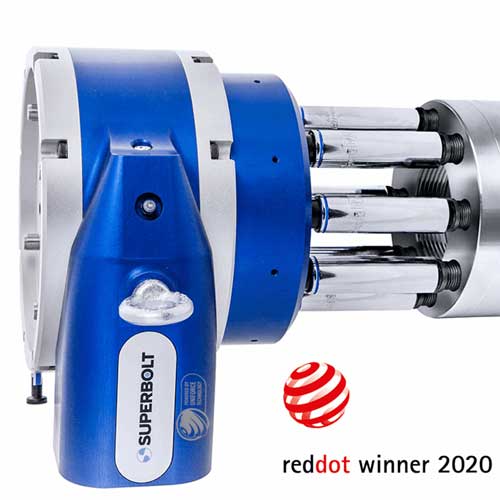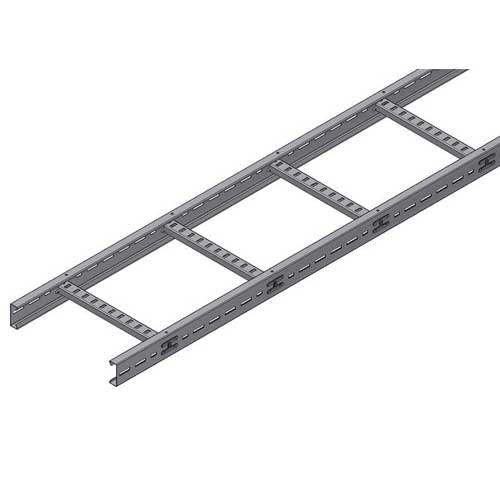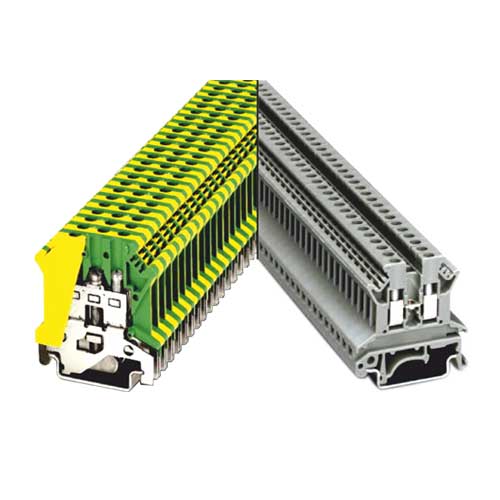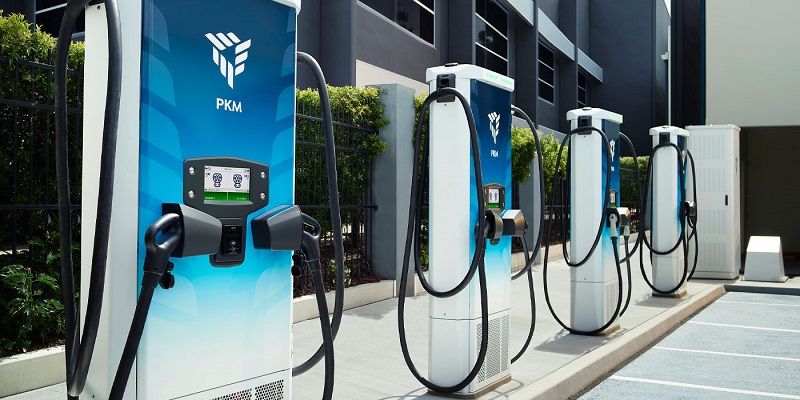Schedule a Call Back
Coating Thickness Measurement with SIDSP Technology
 Technical Articles
Technical Articles- Nov 27,13
Intelligent sensors with integrated digital signal processing are becoming the trend in an increasing number of applications. There are considerable and valuable advantages due to the interference immunity resulting in higher repeatability, durability and reliability. And because this technology does not involve higher manufacturing costs, it's merely a matter of time before "digital" will also dominate in the field of coating thickness measurement.
 With today's so called "Digital Coating Thickness Testing Gauges", the basic principle of the analogue technology based electro-magnetic coating thickness measurement is used which dates back to the 1970s. Though it has been continuously developed and improved over the years, a lot of requirements remain unrealised so far. It is true that analogue coating thickness gauges are reliable, but only as long as they are used in disturbance-free conditions.
With today's so called "Digital Coating Thickness Testing Gauges", the basic principle of the analogue technology based electro-magnetic coating thickness measurement is used which dates back to the 1970s. Though it has been continuously developed and improved over the years, a lot of requirements remain unrealised so far. It is true that analogue coating thickness gauges are reliable, but only as long as they are used in disturbance-free conditions.
Disturbance-free conditions, however, are the ideal case. In real typical application settings, readings may be disturbed by electromagnetic fields, insufficient filtering of measuring signals, quick variations in temperature or imprecise linearisation. In addition, precise measurement always requires taking a sufficient number of readings to accurately evaluate the true thickness of the coating, a precondition the user may not always be aware of.
The shortcomings are mostly related to the fact that prior analogue technology may only be improved by expending disproportional effort. Some of the problems cannot be solved at all by using the methods of analogue technology. As a matter of fact, an optimal filtering of the measuring signal, for example, is simply not achievable in analogue technology with respect to the inappropriate technical expenditure that would be required. Another reason is related to the enormous stability and temperature problems involved.
Analogue coating thickness gauges can be viewed as sort of a compromise and viewed and accepted as a solution with priority yielded to the cost/benefit ratio. Once the ideal range of conditions and parameters are exceeded, disturbances will accumulate in an uncontrollable way so that nobody will be able to see whether and at which degree readings are disturbed. These disturbances may even be temporarily stable so that they will remain undetected - neither taking readings repeatedly at the same spot nor using suitable calibration methods would be able to uncover them.
Such uncontrollable falsification of the readings may be undetected by the user or otherwise be accepted as long as there is no technical alternative. The digital signal processing approach finally offers a solution to this problem.
Analogue and Digital Coating Thickness Measurement
 Conventional analogue coating thickness gauges transfer measuring signals via a cable to the electronic unit of the thickness gauge where a complicated and interference-prone analogue data processing takes place. Such electronic units may include up to eight analogue modules, sometimes including expensive precision components such as temperature-stable amplifiers, capacitors and voltage regulators.
Conventional analogue coating thickness gauges transfer measuring signals via a cable to the electronic unit of the thickness gauge where a complicated and interference-prone analogue data processing takes place. Such electronic units may include up to eight analogue modules, sometimes including expensive precision components such as temperature-stable amplifiers, capacitors and voltage regulators.
Voltage regulators designed for a range of voltages commonly take up much space and require complicated circuitry. During the process of manufacture of such measuring gauge, all of its components must be subjected to strict testing, thermal aging and careful selection procedure.
Digital sensors for coating thickness measurement based on the magnetic-induction or eddy currents principle combine the complete signal creation, measuring and processing unit inside the sensor. The sensor is able to create all necessary control signals and to edit and process the return measuring signals digitally inside the sensor. Only the completely processed, digital coating thickness values are transferred to the coating thickness gauge for display, statistical evaluation and storage. The gauge no longer is used for processing the individual coating thickness values, it merely host and manages data, displays the data and exports it.
This technology has been developed by ElektroPhysik for ElektroPhysik and is branded as "SIDSP?" - sensor-integrated-digital-signal processing. SIDSP-sensors only require two simple analogue modules that can be implemented compactly: a driver amplifier for controlling the sensor head and a measuring amplifier to amplify the measuring signal delivered by the measuring head. One single operating voltage is sufficient. Embedded in an advanced microcomputer, the analog-to-digital converters immediately create and process the alternating voltage signals required for measurement. The entire measurement is processed at the point of measurement, not in the host gauge.
All other analogue modules as required for conventional coating thickness gauges become redundant and are simply replaced by appropriate digital signal processing algorithms. As small sized standard components and highly-integrated digital modules are used and as the number of necessary electronic components can be reduced by up to 50%, the size of the complete measuring and processing electronic unit can be miniaturised so as to all fit into the sensor head.
Components that are not used logically cannot fail and as fragile precision components are not necessary any more, the failure frequency of the complete gauge will decrease considerably. That's why SIDSP-sensors feature excellent reliability. In addition to that, the measuring signal is protected from any interference during the entire digital processing to follow.
Because there are less components used with SIDSP, failure frequency is greatly reduced with the absence of these components. Combined with, signal interference protection. SIDSP digital sensors provide greater repeatability and reliability. In metrology, intelligent sensors with digital signal processing have already become widespread today. Measuring procedures using "simple" signals as in pressure, temperature or strain measurement have already been taking advantage of the outstanding features of the digital technology since some time whereas in coating thickness measurement, the trend to intelligent sensors can be considered relatively new.
This is related to the fact that in coating thickness measurement, highly "complex" signals are involved such as alternating voltage signals, varying frequencies or non-linear sensor characteristic curves. As a consequence, the development of such sensors is much more difficult and requires more technical know-how to provide reliable technical solutions.
Elektromagnetic Inteference in Coating Thickness Measurement
The EN 61000 Standard on Electromagnetic compatibility (EMC) defines the legal directives for product safety and performance of electrical equipment in respect to electromagnetic perturbations and immunity from electromagnetic interference of external origin.

Applying to all electronic equipment, this standard refers to high frequency electromagnetic perturbations (as created by VHF, mobile radio or TV) whereas the accuracy of coating thickness measurement is rather subject to low frequency perturbations. Low frequency perturbations, however, are not considered in the EN 61000 standard and as a consequence, the emission of low frequency waves is not tested in this connection.
Typical sources of perturbation are for example computer monitors, electro motors, transformers and converters. To protect an analogue coating thickness gauge from such perturbations it is vital to use well shielded sensor cables. Well shielded cables, however, are inflexible especially if long cable extensions are required.
To overcome this problem, in practical operation, a compromise is commonly made between a cable's shielding performance and its inherent resilience. The disadvantage of such cable is that you cannot see if and to what degree the analogue values are being perturbed.
Interference Immunity: 20 mV Analogue or 4000 mV digital?
Conventional coating thickness gauges commonly transmit the analogue measuring signal at a signal level of approximately 0.02 V to the processing unit of the measuring gauge. In contrast to that, SIDSP systems work on a digital signal level on the cable of approximately 4 V. In view of this considerably increased signal strength being 200 times higher, the digital signal per se is much better protected from interference than the analogue one. While an analogue signal comprises the entire measuring information in a continuous waveform, the digital signal solely consists of subsequent values (0 or 1) in accordance with the voltage levels 0 V or 4 V.
With digital signals it is sufficient simply to distinguish between these two states. A digital signal may be perturbed by just below its 50% level without any loss of information being involved. If, for example, a certain measuring task requires a disturbance level of maximum 1% of the measuring signal level, the tolerance limit with analogue signals on the cable will be reached at 0.0002 V already. Whereas a typical digital signal of 4 Volts on the cable allows a disturbance of up to 2 V and this completely independent from the 1% disturbance limit.
In this example, the digital signal on the cable allows an increased interference immunity being 10,000 times higher as compared to its analogue counterpart. If a measuring signal is impaired during transmission to the gauge's electronic device, this will remain undetected with analogue signals. Just the opposite, SIDSP sensors ensure signal data integrity by using commonplace CRC error-detecting codes. While simple check sum procedures only allow to identify corrupted data, the extended CRC even allows error correction up to a certain distortion level. Even in the extremely unlikely case of a continuous disturbance signal of more than 50% of the digital level imposed upon the signal, the effect of which could not be corrected any more, the SIDSP-sensor will not create a false measuring value since the disturbance signal will be reliably identified and an error message will be created such as "sensor communication not possible".
With gauges using analogue probe technology, disturbance levels of the order of the measuring signal, i.e., in the range of approximately 20 mV, will completely falsify the thickness reading and the impairment through the error cannot even be reliably detected. Basically, error detection is not possible in this case, whereas the digital technology provides an almost 100% protection from errors.
Increased Interference Immunity, and Time Saving Through Digital Filters
Featuring a miniaturised measuring electronics unit combined with a metallic shielding, SIDSP sensors are well protected from extraneous disturbances. Nevertheless, the sensor itself might capture disturbances. Such disturbances, however, will usually be attenuated by filtering or, in the ideal case, removed completely.
The requirements for such measuring signal filters are extremely high. If possible, all disturbances should be filtered out without falsifying the actual signal. Experts refer to such filters as "narrow-band" and "high signal fidelity" filters. Due to the enormous cost, stability and temperature problems that would be involved to design analogue filters in accordance with the filter order and filters characteristics as necessary to meet the above requirements, analogue filters mainly represent a compromise solution.
In contrast to that, digital filters are solely software-based allowing, with respect to filter order and characteristics, to perfectly adapt to the measuring task. In this connection, digital signal processing opens up completely new perspectives that could never be afforded with analogue technologies unless considerable effort would be expended. The user can definitely benefit from the following advantages:
- Digital filters are narrow-band filters affording signal fidelity and stability. If measuring signals are not analogly filtered by means of precision components but if they are instead subject to a software-based digital filtering, this can be done using high quality filters of advanced order as requested by the setting of task of interest without the need of any hardware expenditure being involved.
- Digital signal filters are excellently adapted to filter out the interference without distorting the measuring signal. Digitally processed measuring values are completely system error-free and highly reproducible.
- Another benefit relates to reliable and durable since gauges that use SIDSP digital sensors have 50% less components Changing to digital signal processing, allows a reduction in the number of components in the coating thickness gauges by up to 50%. As each component basically represents a potential error source, using less components will result in a considerable increase of a product's durability and at the time same, a product will be much better protected form error sources and failure during its whole life cycle.
- In addition, digital filters are completely unaffected by variations in temperature with an excellent resistance to aging. SIDSP sensors will exhibit their origin properties even after years of use.
Time Savings & Reliablity, Thanks to Increased Reproducibility
In order to receive sufficiently reliable readings, special industrial norms and standards as set for coating thickness gauges recommend to take at least 5 readings in a row on the same measuring spot to calculate the mean value. This is to achieve a reproducibility of the mean value being 2.24 times better than that of a single reading.
Mathematically, the reproducibility can be increased by taking several readings in a row with considerable additional effort. As a consequence, to redouble reproducibility, a set of 20 readings instead of 5 would be required.
However, the reproducibility of a single reading is crucial for obtaining a certain target reproducibility of results. The better it is, the fewer single readings are required to obtain that target.
Due to the high reproducibility of SIDSP sensors, one single measurement may be sufficient to provide a reliable result so that in many cases multiple readings can be reduced to a minimum or may not be necessary any more.
As a result, with respect to the duration of the measuring process, the user can take full advantage of considerable time savings and save expenses accordingly.
Digital technology adds value to your gauge without surcharge SIDSP sensors afford decisive advantages to the user without additional cost. Thanks to the digital signal processing, performance, noise immunity and reproducibility increase while the price level stays the same.
For that reason the majority of manufacturers of coating thickness gauges are likely to switch to the digital processing of measuring signals on a medium- or long-term basis. ElektroPhysik has broken the ground first and set the standard again. Some manufacturers have announced intensions to introduce gauges with digital signal processing integrated in the senor. All others will have to catch up on this development as soon possible if they want to stay competitive in this field.
About the author: Dipl.-Ing. (TH) Thomas Rohde, Entwicklungsleiter, ElektroPhysik GmbH & Co KG, Germany. Email: thomas.rohde@elektrophysik.com. Translation by Dipl.-
Related Products

Superbolt Tool
Nord-Lock India Pvt Ltd offers a wide range of Superbolt
tool.

Ladder Type Cable Tray
Rama Enterprises offers a wide range of ladder type cable tray.

78 Series Din Rail Terminal Blocks
Werner Electric Private Limited offers a wide range of 78 series din rail terminal blocks.















